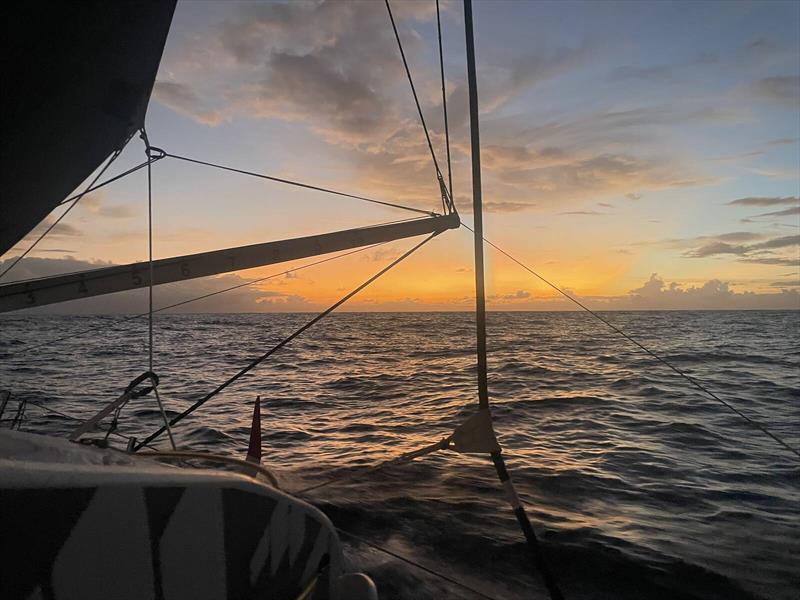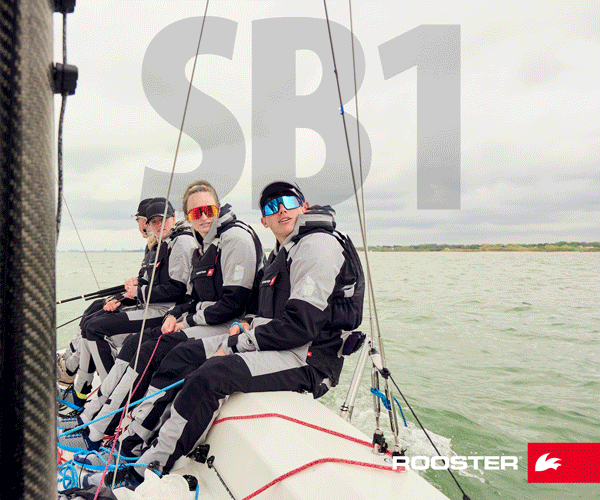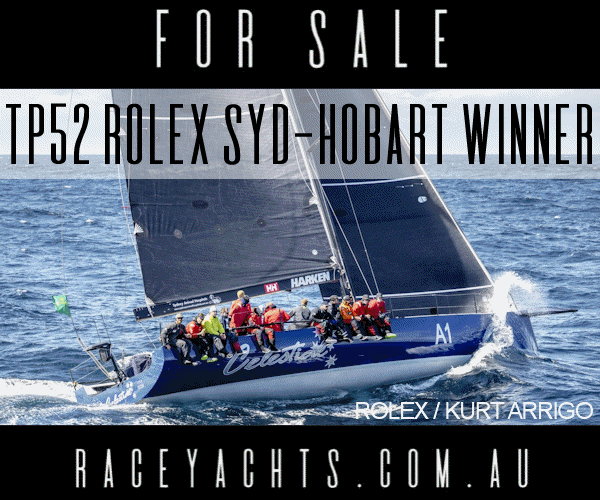
Vendée Globe Race Day 15 – An unusual Brazilian low pressure system should enable the leaders to head straight towards Good Hope
by Vendée Globe media 23 Nov 08:17 PST
23 November 2024

Isabelle Joschke on MACSF – Vendée Globe 2024 © Isabelle Joschke


The leading solo competitors in the Vendée Globe are set to experience a significant shift tomorrow, Sunday, as they encounter a low-pressure system that will propel them rapidly towards the southern tip of Africa and the Southern Ocean beyond. This convergence with the low-pressure system has been predicted for several days. A secondary depression is developing between Brazil and the small islands of Trindade and Martin Vaz.
However, it is still uncertain how many participants will be in position to connect and take advantage. At this stage in the race, it appears very likely that the record-breaking 39-boat fleet will divide into two groups, but the specific point of separation will only become evident tomorrow.
“The current challenge is to sail as fast as possible to make the most of the incoming depression from Brazil for as long as we can. Those who arrive later will struggle to fully utilize it. That’s why we cannot afford to linger!” stated Nico Lunven (Holcim – PBR). Like leader Charlie Dalin (MACIF Santé Prévoyance), Lunven and his surrounding competitors have been pushing hard, achieving speeds exceeding 20 knots in optimal conditions. The trade winds are around 15 knots, increasingly lifting them along the Brazilian coastline and allowing for a more direct route towards South Africa.
Connection is not straightforward
“It isn’t as simple as it appears in the video animations at first glance. The boats must be precisely positioned in an initially unpredictable wind pattern if they want to stay with this low for as long as possible,” cautioned Christian Dumard, meteorological consultant for the Vendée Globe. “The second group has escaped the doldrums and is currently navigating in relatively light trade winds. They will not benefit from the low. For them, rounding the Saint Helena high will likely follow a more conventional route involving a lengthy gybe to the south before heading left towards Cape of Good Hope.”
Dumard elaborated, “The conditions are quite unique. Typically, depressions emerge from Itajaí Bay. The one we’re discussing will be with the leading group early in the race,” adding that during the 2016 edition, which saw record-breaking speeds, Alex Thomson and Armel Le Cléac’h turned south 500 miles further down than the leaders will this time. He concluded, “Due to this exceptional circumstance, we could witness some impressive times at the Cape of Good Hope.”
Hope persists
“The opportunity to navigate through the Saint Helena high-pressure area has emerged, but it is uncertain whether this depression will carry us all the way to the Roaring Forties. The models remain inconclusive about four days in advance,” explained Paul Meilhat (Biotherm).
“It could lead to a somewhat tricky scenario,” Lunven agreed, but he remains eager to cover substantial distances at high speed and in the right direction in the coming days.
Boris Herrmann, currently in 13th aboard Malizia Seaexplorer, is less certain, stating, “The routing indicates it may be a tight squeeze for us. We might only catch the tail end of this depression and thus face being stuck by the Saint Helena anticyclone.”
“If that happens, it will clearly not be ideal, leading to significant gaps, but the outcome remains unpredictable; we must stay alert in the meantime,” noted Benjamin Dutreux (GUYOT environnement – ?? Water Family), who is slowly veering east in hopes of maintaining wind, albeit weaker, longer than continuing further west, like Samantha Davies (Initiatives-Cœur) or Clarisse Crémer (L’Occitane en Provence).
On the verge
Others, such as Damien Seguin (Group APICIL), Louis Burton (Bureau Vallée), and Isabelle Joschke (MACSF), are clearly on the edge and starting to mentally prepare for whatever lies ahead.
“It’s tough to make plans since the situation isn’t abundantly clear. There will be narrow openings to navigate through, but we especially need to avoid being caught in calm areas. It’s complicated today to determine the best route,” stated Franco-German Joschke, who is still part of the leading pack but worries that she might not be able to stay within the same system.
“The fleet is already divided in two, and the gap can continue to widen,” concluded Lunven, who is currently in eighth place.
At present, approximately 500 miles separate the leading group from the next, which has finally exited the Doldrums, except for Szabolcs Weöres (New Europe) who had to halt for mainsail repairs off Grand Canaria.
Find out more…


